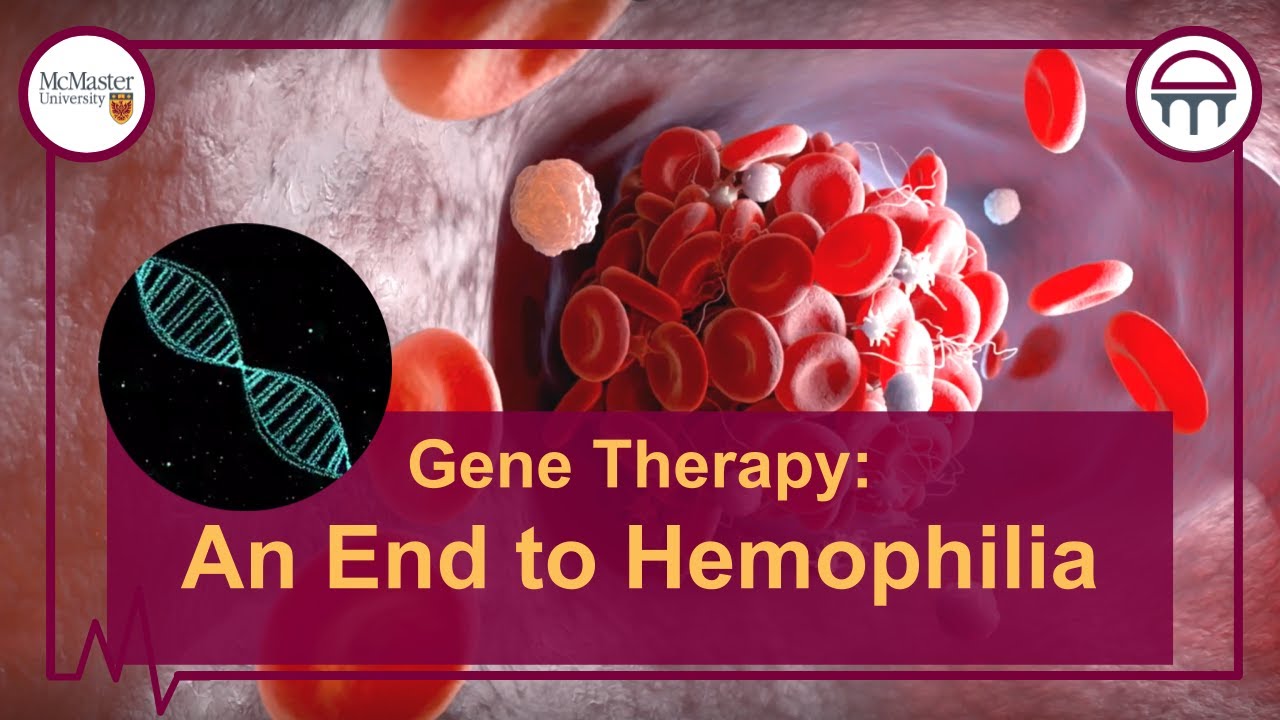Punnett Squares and Sex-Linked Traits (OLD VIDEO)
Summary
TLDRThis video script delves into the underappreciated role of platelets in blood clotting and the impact of hemophilia, a sex-linked recessive disorder. It explains the genetic basis of hemophilia, highlighting the difference between sex chromosomes and autosomes. The script clarifies how hemophilia is inherited, with a focus on the X chromosome's role and the higher likelihood of males being affected. It also outlines the process of creating a sex-linked Punnett square to predict offspring genotypes, emphasizing the increased risk for male children.
Takeaways
- 🩸 Platelets are crucial for blood clotting and preventing excessive bleeding.
- 🔪 Hemophilia is a disorder that affects the ability of blood to clot, making even minor cuts dangerous.
- 💊 Treatments for hemophilia have significantly improved over time, offering better outcomes for those affected.
- 🧬 Hemophilia is a sex-linked recessive trait, meaning it is inherited differently than typical Mendelian traits.
- 🧬 Sex chromosomes are X and Y, with females typically having XX and males having XY.
- 🧬 The X chromosome is larger and contains more genes than the Y chromosome, which is why most sex-linked traits are found on the X.
- 🔠 Hemophilia is represented by the alleles H (normal) and h (hemophilia), with hemophilia being recessive.
- 👩👧👦 A female can be a carrier of hemophilia with the genotype XHXh, but will not show symptoms unless she has XhXh.
- 👨👦 A male can only have hemophilia if his genotype is XhY, as he does not have a second X chromosome to potentially carry a dominant allele.
- 👶 When two parents without hemophilia but with one carrier have children, there is a 25% chance a male child will inherit hemophilia.
- 🧬 Sex-linked disorders like hemophilia and color blindness are more common in males due to their single X chromosome.
Q & A
What are platelets and why are they important?
-Platelets are fragments of cytoplasm that play a crucial role in the blood clotting process, helping to stop bleeding when we get injured.
What is hemophilia and how does it affect the body?
-Hemophilia is a genetic disorder that impairs the blood's ability to clot, leading to continuous bleeding even from minor injuries due to the dysfunction of platelets.
How have treatments for hemophilia evolved over time?
-Treatments for hemophilia have greatly improved, offering better outcomes for individuals with the disorder, although the script does not detail the specific advancements.
What is the difference between sex-linked and Mendelian genetic traits?
-Sex-linked traits, such as hemophilia, are associated with the sex chromosomes and follow a different pattern of inheritance compared to Mendelian traits, which are governed by the principles of dominance and recessiveness on autosomes.
What are sex chromosomes and how do they differ from autosomes?
-Sex chromosomes, designated as X and Y, determine an individual's sex and are distinct from autosomes, which are the remaining chromosomes that do not determine sex.
Why are the X and Y chromosomes named so, and what does their shape have to do with it?
-The X and Y chromosomes are named as such due to historical reasons and their shape does not correspond to their names; the Y chromosome is not shaped like 'Y', and the X chromosome is not shaped like 'X'.
What determines an individual's sex based on their chromosomes?
-An individual with two X chromosomes (XX) is female, while an individual with one X and one Y chromosome (XY) is male.
What are sex-linked traits and why are most of them found on the X chromosome?
-Sex-linked traits are genetic traits located on the sex chromosomes, with most being on the X chromosome because it is larger and contains more genes than the Y chromosome.
How is hemophilia represented in genetic notation, and what does this notation imply?
-Hemophilia is represented by the lowercase allele 'h', indicating its recessive nature, and is placed as a superscript on the sex chromosomes to denote its sex-linked inheritance.
What are the possible genotypes for a female who does not have hemophilia?
-A female who does not have hemophilia could have the genotypes XHXH or XHXh, as the presence of at least one dominant XH allele prevents the expression of the recessive disorder.
How can you determine the risk of a child inheriting hemophilia from carrier parents using a Punnett square?
-By identifying the genotypes of carrier parents (e.g., XHXh for the mother and XHY for the father) and performing a sex-linked Punnett square, you can predict the offspring's genotypes and phenotypes, including the risk of hemophilia.
Outlines

Dieser Bereich ist nur für Premium-Benutzer verfügbar. Bitte führen Sie ein Upgrade durch, um auf diesen Abschnitt zuzugreifen.
Upgrade durchführenMindmap

Dieser Bereich ist nur für Premium-Benutzer verfügbar. Bitte führen Sie ein Upgrade durch, um auf diesen Abschnitt zuzugreifen.
Upgrade durchführenKeywords

Dieser Bereich ist nur für Premium-Benutzer verfügbar. Bitte führen Sie ein Upgrade durch, um auf diesen Abschnitt zuzugreifen.
Upgrade durchführenHighlights

Dieser Bereich ist nur für Premium-Benutzer verfügbar. Bitte führen Sie ein Upgrade durch, um auf diesen Abschnitt zuzugreifen.
Upgrade durchführenTranscripts

Dieser Bereich ist nur für Premium-Benutzer verfügbar. Bitte führen Sie ein Upgrade durch, um auf diesen Abschnitt zuzugreifen.
Upgrade durchführen5.0 / 5 (0 votes)






